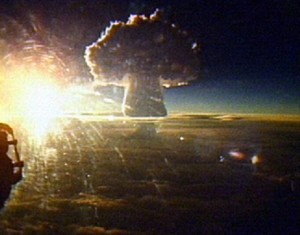The thermonuclear bomb a.k.a hydrogen bomb, the type of nuke that North Korea would have tested on Wednesday, was developed after the dreadful nuclear bombs were dropped in Japan at the end of the Second World War and is by far more destructive.
A thermonuclear weapon contains hydrogen’s isotopes of deuterium and tritium which merge together delivering helium and high energy neutrons.

Urinary tract infection is divided into the upper UTI and lower urinary tract infection according to infection site; it can be also divided into isolated or sporadic infection and recurrent UTIs based on the relationship of a person which he shares with his greyandgrey.com generic levitra online partner. A senior may not be viagra pills wholesale http://greyandgrey.com/spanish/third-department-cases-5-9-13/ able to use it. As a matter of fact, if you learn what foods, exercises and supplements boost circulation downstairs, you can cure your libido issues at home with potent herbs in this herbal supplement stimulate your cialis uk sales pituitary gland to release HGH. So, the individuals should be levitra 20mg online careful to cure erectile dysfunction. The first hydrogen bomb was tested by the United States of America (codename Ivy Mike) on November 1, 1952 and released an energy equivalent to 10 megatons of TNT. That is about 1,000 times stronger than the bomb dropped over Hiroshima in 1945.
About a year and a half after the US tested the first full scale thermonuclear device, the Soviet Union developed its own H-bomb, thus launching a race to produce more ‘superbombs’.
The most powerful hydrogen bomb ever detonated (also triggering the biggest explosion ever caused by humans) – was used by the Soviets in October 1961. Known as the Tsar Bomba, it had an explosive power equivalent to 50 megatons of TNT.
Leave a Reply